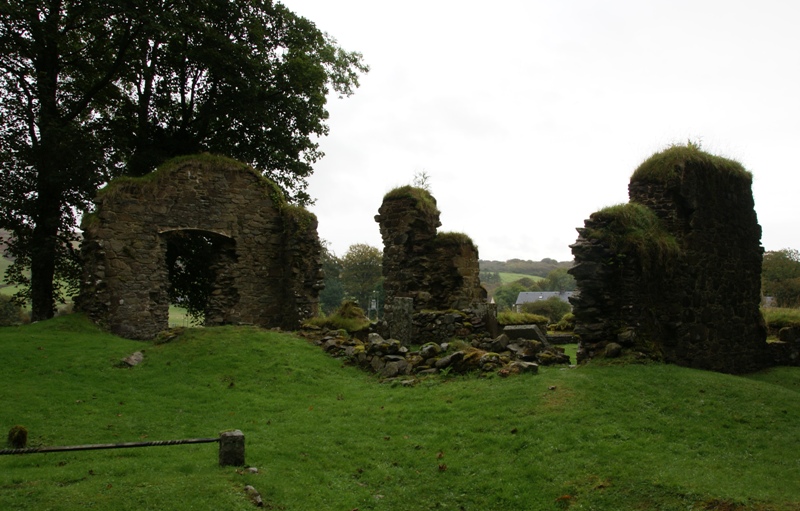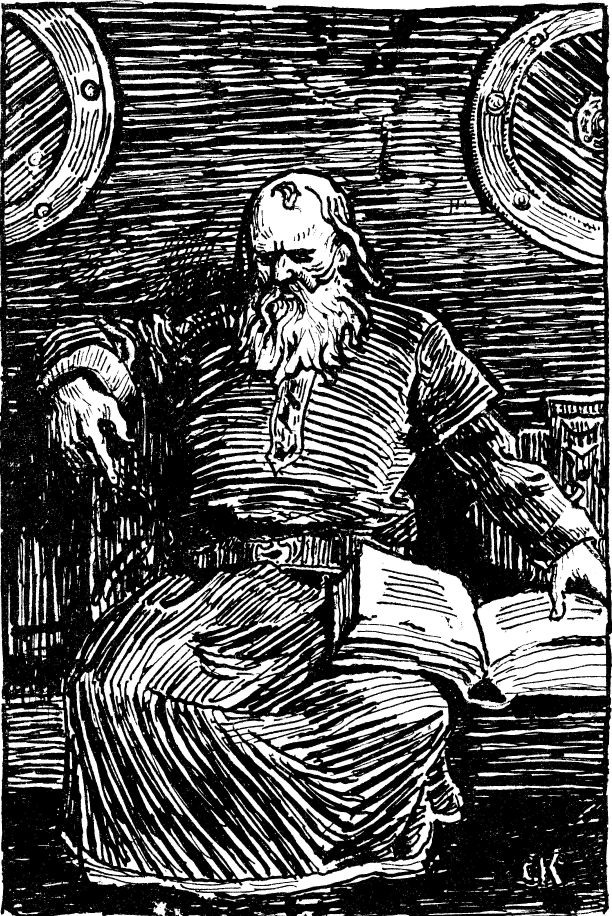|
Rögnvaldr
Ragnvald, Rögnvald or Rognvald or Rægnald is an Old Norse language, Old Norse name (Old Norse ''Rǫgnvaldr'', modern Icelandic ''Rögnvaldur''; in Old English language, Old English ''Regenweald'' and in Old Irish, Middle Irish language, Middle Irish ''Ragnall (given name), Ragnall''). Notable people with the name include: * Ragnvald Heidumhære (9th century), King of Vestfold * Rognvald Eysteinsson (fl. late 9th century), Jarl of Møre * Ragnall ua Ímair (died 921), King of York * Ragnall Guthfrithson, co-King of York, 943-44 * Ragnall mac Gofraid (died 1004/1005), King of the Isles * Rogvolod (mid-10th century), Prince of Polotsk * Ragnvald Ingvarsson (10th century), officer of the Varangian Guard * Ragnvald Ulfsson the Old, jarl of Vastergotland and possibly father of King Stenkil of Sweden * Rognvald Brusason (died c. 1046), Jarl of Orkney * Ragnvald Ingesson (late 11th century), only known son and heir of King Inge I of Sweden * Ragnvald Knaphövde (early 12th century), King o ... [...More Info...] [...Related Items...] OR: [Wikipedia] [Google] [Baidu] |
Rǫgnvaldr Guðrøðarson
Rǫgnvaldr Guðrøðarson (died 14 February 1229) ruled as King of the Isles from 1187 to 1226. He was the eldest son of Guðrøðr Óláfsson, King of Dublin and the Isles. Although the latter may have intended for his younger son, Óláfr Guðrøðarson (died 1237), Óláfr, to succeed to the kingship, the Islesmen chose Rǫgnvaldr, who was likely Óláfr's half-brother. Rǫgnvaldr went on to rule the Kingdom of the Isles for almost forty years before losing control to Óláfr. The Crovan dynasty may have reached its zenith during Rǫgnvaldr's reign. Acclaimed in one near contemporary Scandinavian source as "the greatest warrior in the western lands", he lent military aid to William I, King of Scotland against the disaffected Haraldr Maddaðarson, Earl of Orkney and Caithness, and occupied Caithness for a short period of time at about the turn of the thirteenth century. Like his predecessors, Rǫgnvaldr was closely associated with the rulers of northern Wales. A daughter of h ... [...More Info...] [...Related Items...] OR: [Wikipedia] [Google] [Baidu] |
Ragnall (given Name)
''Ragnall'', ''Raghnall'', ''Raonall'', and ''Raonull'' are masculine personal names or given names in several Gaelic languages. ''Ragnall'' occurs in Old Irish, and Middle Irish/ Middle Gaelic. It is a Gaelicised form of the Old Norse '' Røgnvaldr'', ''Rǫgnvaldr'', ''Rögnvaldr''. This Old Norse name is composed of two elements: ''regin'', meaning "(Germanic) Gods"; and ''valdr'', meaning "powerful". It has also been suggested that ''Ragnall'' could also represent the Old Norse ''Ragnarr'' as well. ''Ragnall'' can be Anglicised as '' Ranald'' and ''Ronald'', and Latinised as '' Reginald'', ''Reginaldus''. The modern spelling is '' Raghnall'' in Scottish Gaelic and either ''Raghnall'' or ''Raonull'' in Irish. Anglicised forms of ''Raghnall'' include: '' Ranald'', ''Rannal'', and ''Ronald''. The final ''-ll'' sound of the Gaelic names are de-vocalized, and to non-Gaelic-speakers this suggests ''-d'' sound. In this way the name is similar to the various forms of the Gaelic '' Do ... [...More Info...] [...Related Items...] OR: [Wikipedia] [Google] [Baidu] |
Ragnall Mac Gofraid
Ragnall mac Gofraid (died 1004/1005) was King of the Isles and likely a member of the Uí Ímair kindred. He was a son of Gofraid mac Arailt, King of the Isles. Ragnall and Gofraid flourished at a time when the Kingdom of the Isles seems to have suffered from Orcadian encroachment at the hands of Sigurðr Hlǫðvisson, Earl of Orkney. Gofraid died in 989. Although Ragnall is accorded the kingship upon his own death in 1004 or 1005, the succession after his father's death is uncertain. During his career, Ragnall may have contended with Gilli, an apparent Hebridean rival who was closely aligned with Sigurðr. Another possible opponent of Ragnall may have been Sveinn Haraldsson, King of Denmark who attacked Mann in 955. This man is recorded to have been exiled from Scandinavia at one point in his career, and to have found shelter with a certain "'", a monarch that could refer to Ragnall himself. Whatever the case, Mann also fell prey to Æthelræd II, King of the English i ... [...More Info...] [...Related Items...] OR: [Wikipedia] [Google] [Baidu] |
Rognvald Brusason
Ragnvald, Rögnvald or Rognvald or Rægnald is an Old Norse name (Old Norse ''Rǫgnvaldr'', modern Icelandic ''Rögnvaldur''; in Old English ''Regenweald'' and in Old Irish, Middle Irish '' Ragnall''). Notable people with the name include: * Ragnvald Heidumhære (9th century), King of Vestfold * Rognvald Eysteinsson (fl. late 9th century), Jarl of Møre * Ragnall ua Ímair (died 921), King of York * Ragnall Guthfrithson, co-King of York, 943-44 * Ragnall mac Gofraid (died 1004/1005), King of the Isles * Rogvolod (mid-10th century), Prince of Polotsk * Ragnvald Ingvarsson (10th century), officer of the Varangian Guard * Ragnvald Ulfsson the Old, jarl of Vastergotland and possibly father of King Stenkil of Sweden * Rognvald Brusason (died c. 1046), Jarl of Orkney * Ragnvald Ingesson (late 11th century), only known son and heir of King Inge I of Sweden * Ragnvald Knaphövde (early 12th century), King of Sweden * Rögnvald Kali Kolsson (12th century), Norwegian saint and jarl of p ... [...More Info...] [...Related Items...] OR: [Wikipedia] [Google] [Baidu] |
Ragnall Mac Somairle
Ragnall mac Somairle (also known in Goidelic languages, Gaelic as ''Raghnall'', ''Raonall'', ''Raonull''; in English as ''Ranald''; in Latin as ''Reginaldus''; and in Old Norse as ''Rögnvaldr'', ''Røgnvaldr'', ''Rǫgnvaldr''; died 1191/1192 – 1210/1227) was a significant late-twelfth-century magnate, seated on the western seaboard of Scotland. He was probably a younger son of Somerled, Somairle mac Gilla Brigte, Lord of Argyll and his wife, Ragnhildis Olafsdottir , Ragnhildr, daughter of Óláfr Guðrøðarson (died 1153), Óláfr Guðrøðarson, King of the Isles. The twelfth-century Kingdom of the Isles, ruled by Ragnall's father and maternal grandfather, existed within a hybrid Norse-Gaelic milieu, which bordered an ever-strengthening and consolidating Kingdom of Scots. In the mid-twelfth century, Somairle rose in power and won the Kingdom of the Isles from Guðrøðr Óláfsson, his brother-in-law. After Somairle perished Battle of Renfrew, in battle against the Scots in ... [...More Info...] [...Related Items...] OR: [Wikipedia] [Google] [Baidu] |
Rögnvald Kali Kolsson
Rögnvald Kali Kolsson (; ), also known as Saint Ronald of Orkney (c. 1100 – 1158), was a Norwegian earl of Orkney who came to be regarded as a Christian saint. Two of the Orkney Islands are named after Rögnvald, namely North Ronaldsay and South Ronaldsay. Life Family and education Rögnvald's parents were lendmann Kolr Kalisson and Gunnhildr Erlendsdottir, the sister of Magnus Erlendsson, Earl of Orkney. It was through his mother, Gunnhildr, that Rögnvald had a claim on the Orkney earldom. Rögnvald Kali Kolsson may have been born in Jæren, Norway., but this seems unlikely, since his family resided in Agder and Jæren is in Rogaland. Some researchers think he may have been born in Fjære, a part of Grimstad. The king's estate at Lista is also believed to be the possible location of both his birthplace and his childhood home. Rögnvald's family owned several farms in Agder where the boy could have spent his childhood. Acquisition of Orkney King Sigurd I of Norway appoi ... [...More Info...] [...Related Items...] OR: [Wikipedia] [Google] [Baidu] |
Rognvald Eysteinsson
Rognvald Eysteinsson () was the founding Jarl (or Earl) of Møre in Norway, and a close relative and ally of Harald Fairhair, the earliest known King of Norway. In the Norse language he is known as Rǫgnvaldr Eysteinsson (''Mǿrajarl'') and in modern Norwegian as Ragnvald Mørejarl. He is sometimes referred to with bynames that may be translated into modern English as "Rognvald the Wise" or "Rognvald the Powerful". The earliest available sources regarding Rognvald are mutually contradictory and were compiled long after he died. The best known are the Norse Sagas, although modern scholars highlight many inconsistencies and improbable claims regarding Rognvald in the sagas, and believe that they must be treated with caution: The texts of the sagas were compiled three centuries after the events described and their accuracy in regard to Rognvald's life and historical significance is now questioned. Hence some scholars instead emphasise other accounts, closer to the historical per ... [...More Info...] [...Related Items...] OR: [Wikipedia] [Google] [Baidu] |
Old Norse Language
Old Norse, also referred to as Old Nordic or Old Scandinavian, was a stage of development of North Germanic dialects before their final divergence into separate Nordic languages. Old Norse was spoken by inhabitants of Scandinavia and their overseas settlements and chronologically coincides with the Viking Age, the Christianization of Scandinavia, and the consolidation of Scandinavian kingdoms from about the 8th to the 15th centuries. The Proto-Norse language developed into Old Norse by the 8th century, and Old Norse began to develop into the modern North Germanic languages in the mid- to late 14th century, ending the language phase known as Old Norse. These dates, however, are not precise, since written Old Norse is found well into the 15th century. Old Norse was divided into three dialects: Old West Norse (Old West Nordic, often referred to as ''Old Norse''), Old East Norse (Old East Nordic), and Old Gutnish. Old West Norse and Old East Norse formed a dialect continu ... [...More Info...] [...Related Items...] OR: [Wikipedia] [Google] [Baidu] |
Rögnvaldr Óláfsson (d , 10th-century prince of Polotsk
{{hndis, Olafsson, Ragnvald ...
Ragnvald Olafsson or Rǫgnvaldr Óláfsson may refer to: *Ragnvald Heidumhære (fl. 9th century), possibly son of Olaf Geirstad-Alf, petty king of Vestfold * Rǫgnvaldr Óláfsson (fl. 1164), king of Mann and the Isles *Rǫgnvaldr Óláfsson (died 1249), king of Mann and the Isles See also *Rogvolod Rogvolod (; ; 920978) was the first chronicled prince of Polotsk. He reigned until 978, when he and his two sons were killed by Vladimir the Great, then the prince of Novgorod, who took his daughter Rogneda as a wife. Name In the ''Primary Chro ... [...More Info...] [...Related Items...] OR: [Wikipedia] [Google] [Baidu] |
Ragnvald Knaphövde
Ragnvald Knaphövde was a King of Sweden whose reign is estimated to have occurred in the mid-1120sRagnvald knaphövde'' at the site of the Swedish Museum of National Antiquities, retrieved January 20, 2007. or c. 1130.Ragnvald Knaphöfde' in ''Nordisk familjebok'' (1915).''Ragnvald Knaphövde'' in ''Nationalencyklopedin'' (1994). His cognomen ''Knaphövde'' is explained as referring to a drinking vessel, the size of a man's head or meaning "round head" and referring to his being foolish. Ragnvald is mentioned in the regnal list of the '' Westrogothic law'' as the successor of King Inge the Younger. His parentage is uncertain: King Inge the Elder of Sweden had a son named Ragnvald, and historian Sven Tunberg has suggested him as identical with Ragnvald Knaphövde. However, another tradition presents King Ragnvald as the son of an Olof Näskonung (''Neskonungr'' meant "king of a ness" or "petty king", in Old Norse), and the regnal list of the Westrogothic law does not mention that ... [...More Info...] [...Related Items...] OR: [Wikipedia] [Google] [Baidu] |
Inge I Of Sweden
Inge the Elder (Swedish language, Swedish: ''Inge Stenkilsson''; Old Norse: ''Ingi Steinkelsson''; died c. 1105–1110) was a king of Sweden. In English literature he has also been called ''Ingold''. While scant sources do not allow a full picture of his term of kingship, he is known to have led a turbulent but at length successful reign of more than two decades. He stands out as a devout Christian who founded the first abbey in Sweden and acted harshly against Norse religion, pagan practices. The kingdom was still an unstable realm based on alliances of noblemen, and Inge's main power base was in Västergötland and Östergötland; one of the earliest chronicles that mention his reign knows him as ''rex gautorum'', king of the Geats.Peter Sawyer, ''När Sverige blev Sverige''. Alingsås: Viktoria, 1991, p. 37. Biography Inge was the son of the former King Stenkil and Saint Ingamoder Emundsdotter of Sweden, a Swedish princess. Inge shared the rule of the kingdom with his probably ... [...More Info...] [...Related Items...] OR: [Wikipedia] [Google] [Baidu] |





